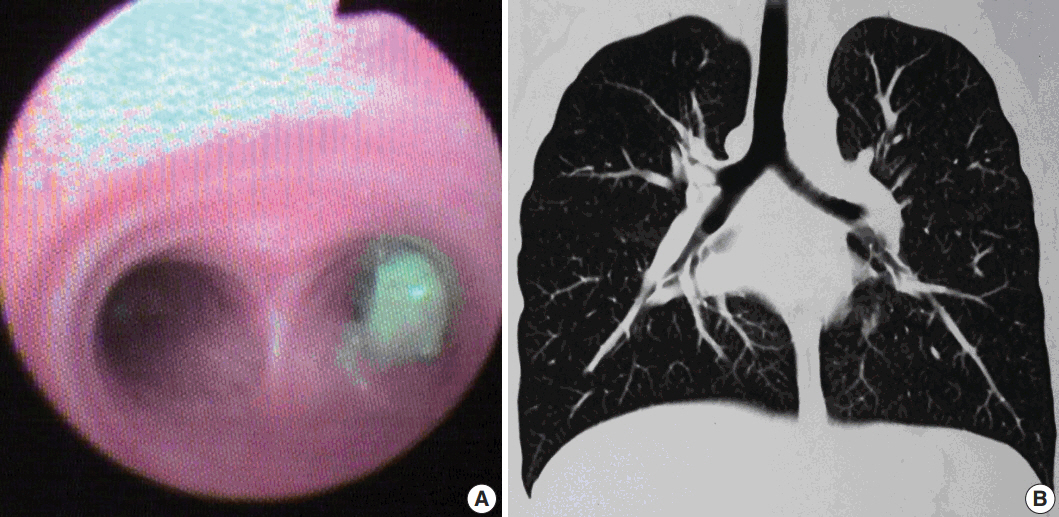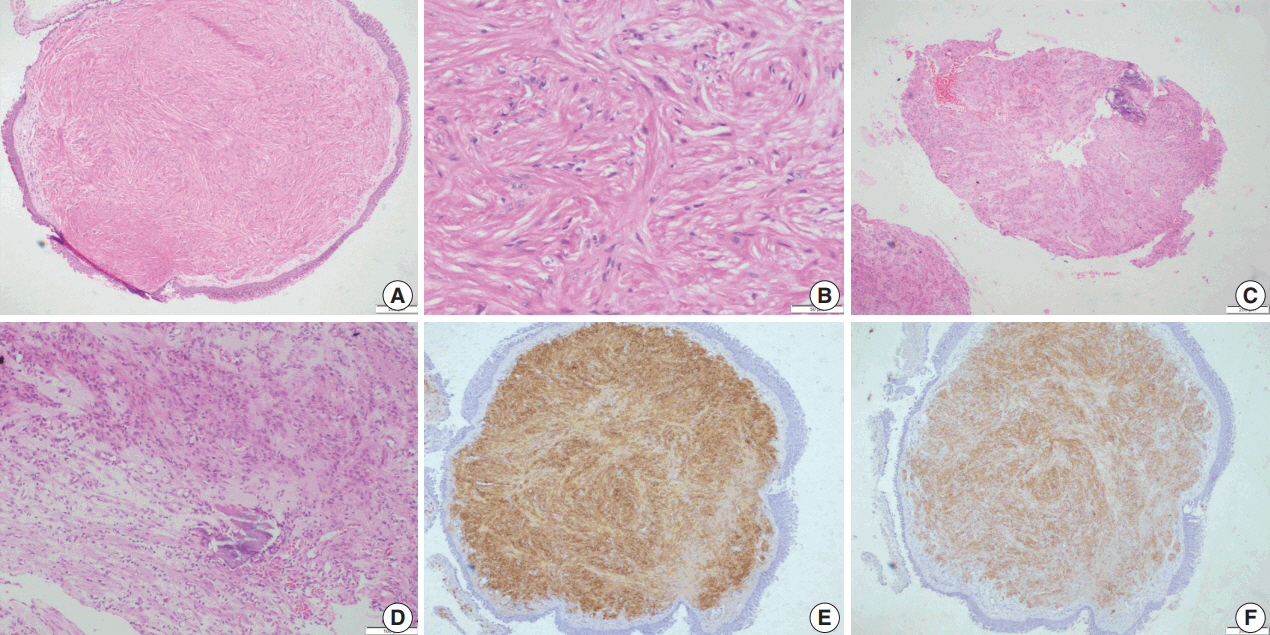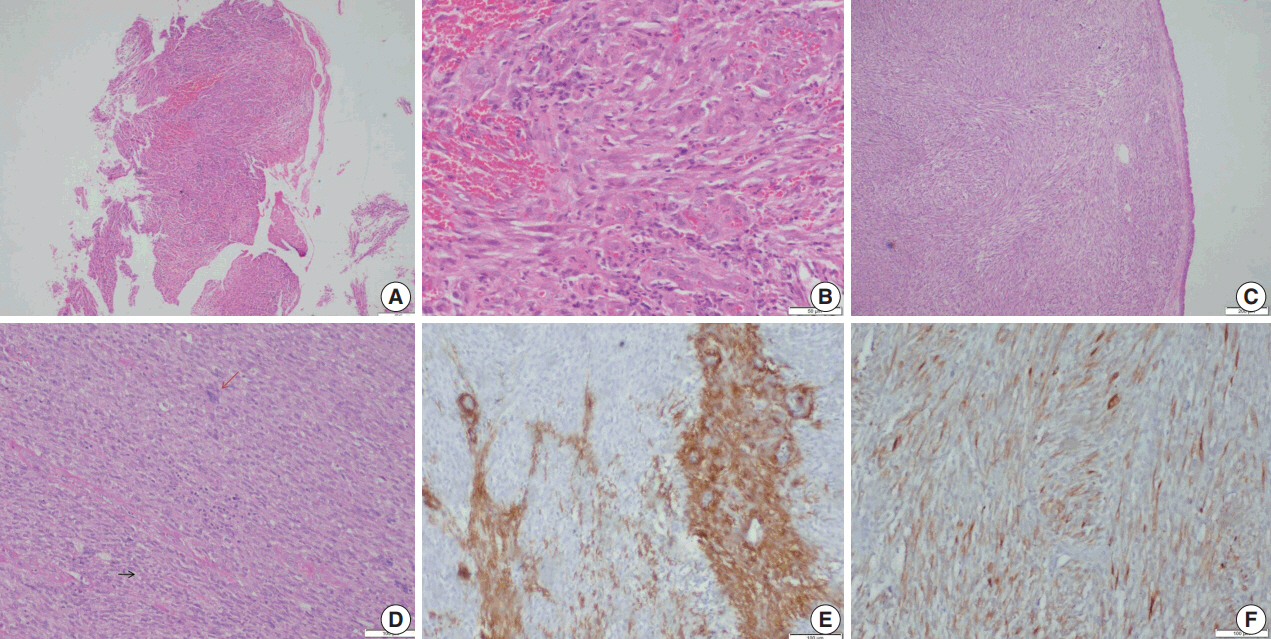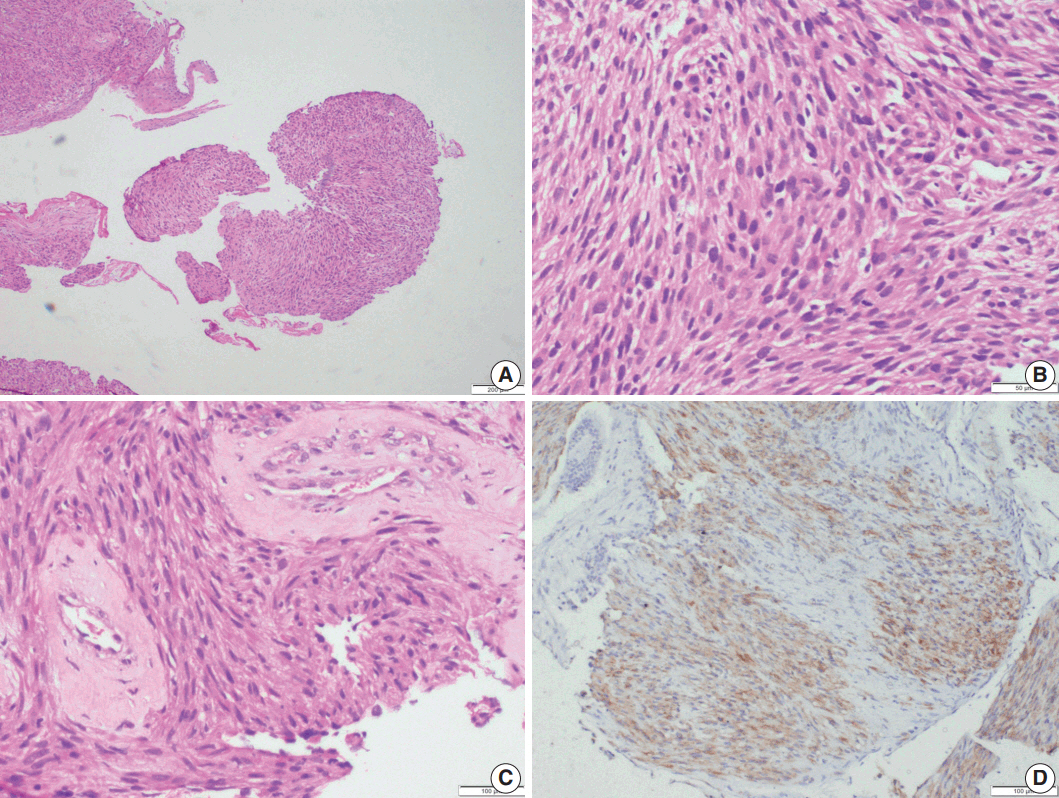Articles
- Page Path
- HOME > J Pathol Transl Med > Volume 52(4); 2018 > Article
-
Original Article
Endobronchial Smooth Muscle Tumors: A Series of Five Cases Highlighting Pitfalls in Diagnosis -
Tripti Nakra, Aanchal Kakkar
 , Shipra Agarwal
, Shipra Agarwal , Karan Madan1
, Karan Madan1 , Suresh C Sharma2, Deepali Jain,
, Suresh C Sharma2, Deepali Jain,
-
Journal of Pathology and Translational Medicine 2018;52(4):219-225.
DOI: https://doi.org/10.4132/jptm.2018.05.16
Published online: July 11, 2018
Department of Pathology, All India Institute of Medical Sciences, New Delhi, India
1Department of Pulmonary Medicine, All India Institute of Medical Sciences, New Delhi, India
2Department of Otorhinolaryngology, All India Institute of Medical Sciences, New Delhi, India
- Corresponding Author Deepali Jain, MD, DNB, FIAC Department of Pathology, All India Institute of Medical Sciences, New Delhi 110029, India Tel: +91-9868895112 Fax: +91-11-26588663 E-mail: deepalijain76@gmail.com
© 2018 The Korean Society of Pathologists/The Korean Society for Cytopathology
This is an Open Access article distributed under the terms of the Creative Commons Attribution Non-Commercial License (http://creativecommons.org/licenses/by-nc/4.0) which permits unrestricted non-commercial use, distribution, and reproduction in any medium, provided the original work is properly cited.
Figure & Data
References
Citations

- Case report: Successful bronchoscopic interventional treatment of endobronchial leiomyomas
Yinfeng Wang, Yixiang Zhang, Ruirui Tong
Open Life Sciences.2024;[Epub] CrossRef - Pediatric endobronchial tumors with a mimicker: A case series
Kulwiwat Promsawasdi, Teerasak Phewplung
Pediatric Pulmonology.2024; 59(10): 2669. CrossRef - Smooth Muscle Conditions of the Chest
Matthew R. McCann, Lucas R. Massoth, Carlos A. Rojas, Yin P. Hung, John P. Lichtenberger, Gerald F. Abbott, Justin T. Stowell
Journal of Thoracic Imaging.2021; 36(5): 263. CrossRef - A Well-Defined Endobronchial Tumor in a 26-Year-Old Man
Christina Triantafyllidou, Petros Effraimidis, Mirjam Schimanke, Simone Ignatova, Anders Ringman, Susann Skoog, Farkas Vánky, Miklós Boros, Karin Cederquist
Chest.2021; 159(5): e313. CrossRef - Primary Pulmonary Leiomyoma
Mohammad Abu-Hishmeh, Gowthami Kobbari, Fouzia Shakil, Oleg Epelbaum
Journal of Bronchology & Interventional Pulmonology.2020; 27(4): e54. CrossRef
 PubReader
PubReader ePub Link
ePub Link-
 Cite this Article
Cite this Article
- Cite this Article
-
- Close
- Download Citation
- Close
- Figure




Fig. 1.
Fig. 2.
Fig. 3.
Fig. 4.
| Case No. | Age (yr)/Sex | Clinical presentation | Imaging | Bronchoscopy | Clinical diagnosis | Pathology diagnosis | Management and outcome |
|---|---|---|---|---|---|---|---|
| 1 | 13/M | Cough, hemoptysis × 3 mo | Intraluminal soft tissue mass of 3.5 cm in RMB | Mass lesion in RMB | Benign tumor | Leiomyoma | Excision; symptom-free at 5 yr |
| 2 | 18/M | Non-smoker; dyspnea, cough, fever × 8 mo | 1 cm endotracheal growth with calcification | Lower tracheal growth arising from postero- lateral wall of RMB | Benign tumor | Leiomyoma | Excision; symptom-free at 7 mo |
| 3 | 65/M | Smoker; hemoptysis SOB × 4 days | Intraluminal nodule of 0.5 cm in LMB | LMB nodule | Tuberculosis vs. malignancy | Leiomyoma | Excision; symptom-free at 4 mo |
| 4 | 28/F | Dyspnea, hemoptysis × 1 yr | RMB tumor of 3.5 cm with carina involvement and right lung collapse | Endobronchial lobulated growth occluding the RMB just distal to carina | Inflammatory myofibroblastic tumor | LMS | Radiotherapy 30 cycles/60 Gy, after which patient is asymptomatic for 8 mo |
| 5 | 57/F | Non-smoker; chest pain × 1 yr; h/o ATT | 5.1 cm mass in lower lobe of right lung | Intrabronchial growth | Lung carcinoma with bone and liver metastases | LMS | Chemotherapy 9 cycles; marked reduction in size at 9 mo |
| Case No. | SMA | Desmin | SMMHC | Pan-CK | EMA | S-100 | HMB-45 | ALK-1 | EBV-LMP1 | MIB-1 LI (%) | Final diagnosis |
|---|---|---|---|---|---|---|---|---|---|---|---|
| 1 | Diffuse + | Diffuse + | Diffuse + | Negative | Negative | Negative | Negative | Negative | Negative | 1–2 | LM |
| 2 | Diffuse + | Focal + | Diffuse + | Negative | Negative | Negative | Negative | Negative | Negative | 1–2 | LM |
| 3 | Diffuse + | Diffuse + | Diffuse + | Negative | Negative | Negative | Negative | Negative | Negative | 1 | LM |
| 4 | Focal + | Focal + | Focal + | Negative | Negative | Focal + | Negative | Negative | Negative | 8–10 | LMS |
| Focal + | Diffuse + | Focal + | Negative | Negative | Negative | Negative | Negative | Negative | 8–10 | - | |
| Negative | Focal + | Focal + | Negative | Negative | Focal + | Negative | Negative | Negative | 10 | ||
| 5 | Diffuse + | Focal + | Diffuse + | Negative | Focal + | Negative | Negative | Negative | Negative | 10 | LMS |
SMT, smooth muscle tumor; M, male; RMB, right main bronchus; SOB, shortness of breath; LMB, left main bronchus; F, female; LMS, leiomyosarcoma; h/o, history of; ATT, anti-tubercular treatment.
SMA, smooth muscle actin; SMMHC, smooth muscle myosin heavy chain; CK, cytokeratin; EMA, epithelial membrane antigen; HMB-45, human melanoma black 45; EBV, Epstein-Barr virus; LMP1, latent membrane protein; LM, leiomyoma; LMS, leiomyosarcoma.

 E-submission
E-submission










